Blackbirds are among the most common and recognizable birds in Delaware, with ten common species calling the state home, whether they are all-year-round residents or seasonal visitors.
These striking birds come in a variety of colors, from deep black to splashes of blue and red. They are popular among birders for their often-flashy plumage and unique songs and calls.
Whether you spot them perched in trees or flying overhead, these fascinating birds are sure to capture your attention.
European Starling
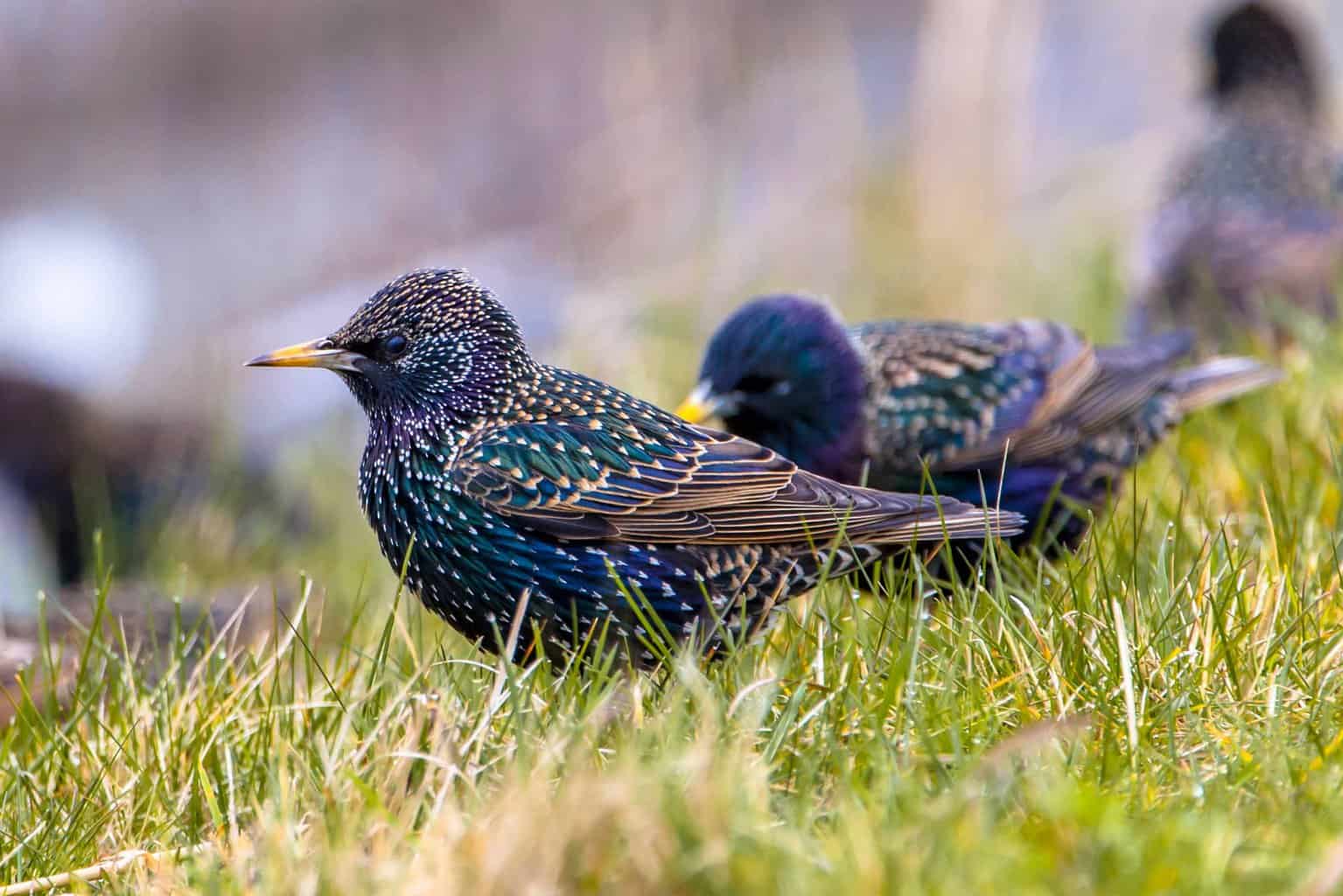
- Scientific Name: Sturnus vulgaris
- Length: 7.5-9 inches (19-23 centimeters)
- Weight: 2–3.6 ounces (57-102 grams)
- Wingspan: 12–17 inches (30-43 centimeters)
The European starling is a large, social bird found throughout much of the United States. In particular, this common blackbird tends to thrive in areas with mild winters and abundant food sources, making Delaware an ideal habitat.
They are glossy black in appearance, with long slender beaks. Breeding adults are darker black and have a green-purple tint.
Starlings are omnivorous birds that feed on various foods, including fruits, seeds, and insects. They are also well-known for their ability to adapt quickly to new environments and disturbances, often taking over abandoned buildings and nesting in unusual areas.
Although they are considered pests by many people due to their aggressive nature and tendency to take over nesting spots from other native birds, the European starling has long been the subject of fascination and study for scientists due to its incredible adaptability.
Boat-Tailed Grackle
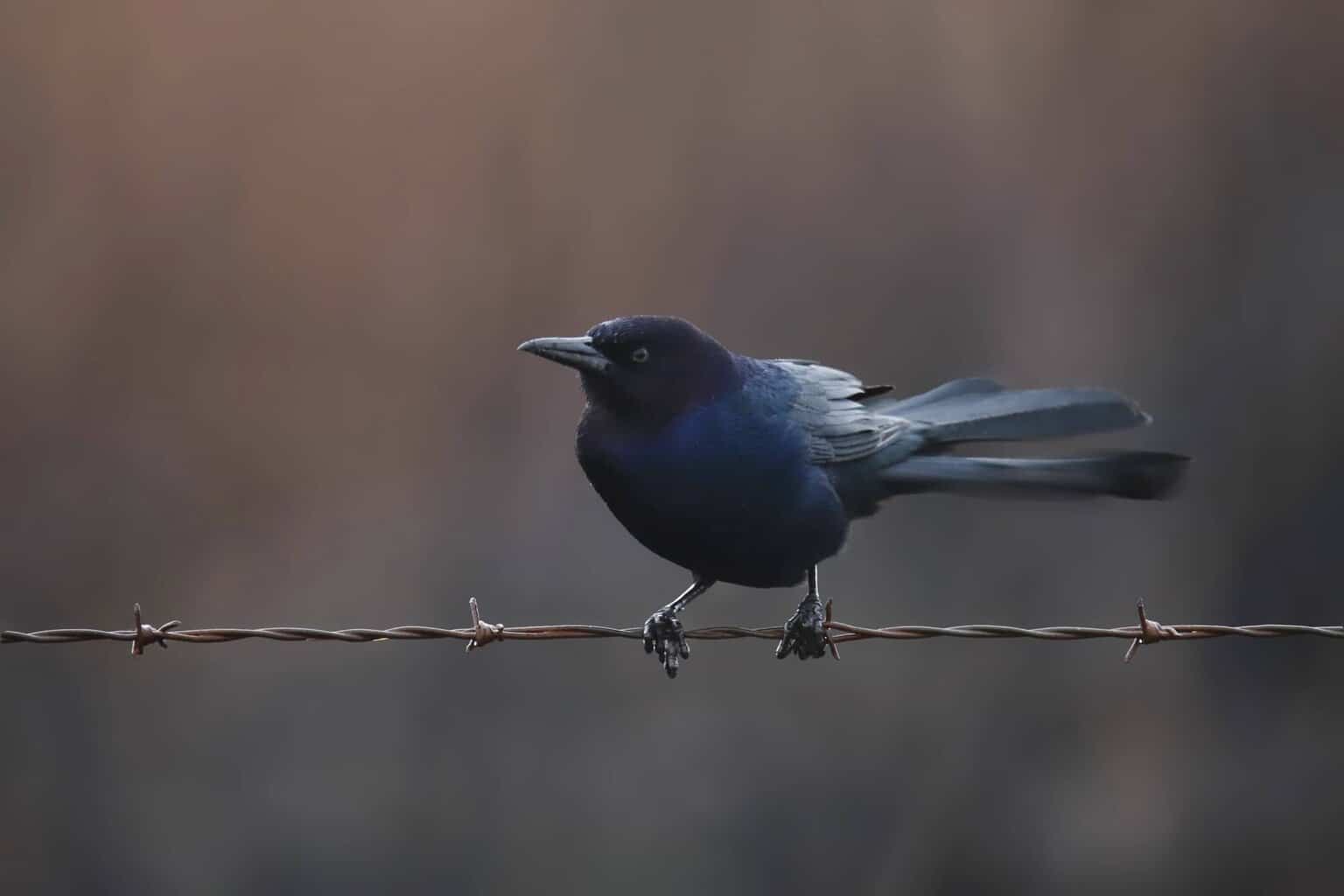
- Scientific Name: Quiscalus major
- Length: 15–17 inches (38-43 centimeters)
- Weight: 5.8–8.8 ounces (164-249 grams)
- Wingspan: 15–20 inches (38-51 centimeters)
The Boat-tailed grackle male is a large glossy black bird found throughout much of the United States and parts of Mexico. These birds are notable for their long tails, which have deeply keeled feathers and give the birds their distinctive “boat-tailed” appearance.
They are a rare species in Delaware, but some live in the state year-round. They’re found all over Delaware, from suburban backyards to open fields near bodies of water.
They are a popular species among birdwatchers, who seek out these rare Delaware natives during the migratory season each year. So if you’re lucky enough to spot one of these striking birds in your backyard or along the side of a road in Delaware, be sure to take note – it’s a truly unique native that you won’t want to miss!
You can tip the scales in your favor and attract them to your backyard with sunflower seeds on platform feeders.
Brown-Headed Cowbird

- Scientific Name: Molothrus ater
- Length: 6.3–8.7 inches (16-22 centimeters)
- Weight: 1.1–2.1 ounces (31-60 grams)
- Wingspan: 12-15 inches (30-38 centimeters)
The Brown-headed cowbird is an interesting creature that makes its home in Delaware. Male Brown-headed cowbirds have black bodies with brown heads, while female birds are dull gray with slight streaking on their bellies.
These birds are brood parasites, which means female cowbirds lay their eggs in the nests of other bird species, avoiding wasting their energy building nests for their family.
The host bird will then raise the baby cowbird to adulthood as its own. Interestingly, this chunky blackbird will even go so far as to push the host bird’s eggs out of the nest! Once grown, the chick leaves the nest and never associates with whatever type of bird raised it. Talk about ungrateful!
While this behavior may seem cruel, it’s actually an adaptive strategy that helps ensure the survival of the Brown-headed cowbird species. Some of the most common Brown-headed cowbird hosts in Delaware include orioles, robins, and wrens.
Red-Winged Blackbird
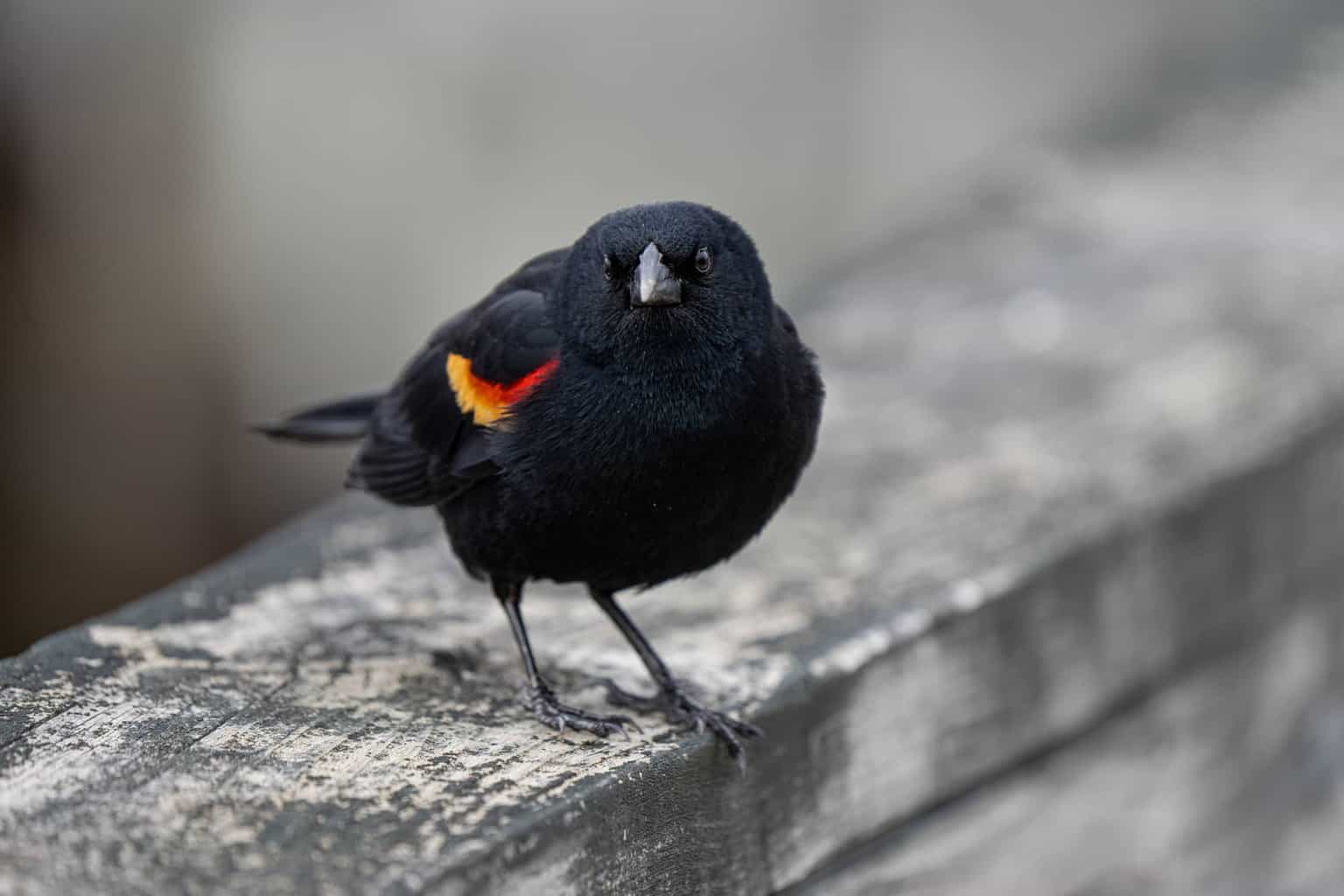
- Scientific Name: Agelaius phoeniceus
- Length: 6.7–9.4 inches (17-24 centimeters)
- Weight: 1.5–2.3 ounces (43-65 grams)
- Wingspan: 12–16 inches (30-41 centimeters)
The Red-winged blackbird (Agelaius phoeniceus) is a species of true blackbird in the genus Agelaius. The adult male has black plumage with a red and yellow patch on its wings, while the female is primarily dark brown.
This bird breeds in marshes from Alaska and Canada to Mexico and can also be found in parts of the United States, including Delaware. These birds are cavity nesters, using trees or shrubs for nesting sites. The Red-winged blackbird is known for its beautiful song consisting of clear whistles, trills, and chucks. This bird is also one of the most abundant breeding birds in North America.
They can be aggressive birds, defending their nest against intruders, including humans.
In Delaware specifically, bird watchers can find the Red-winged blackbird in a variety of habitats, including marshes, open woodlands, and farmlands. These birds are an important part of the state’s ecosystem and play a vital role in controlling insect populations.
Baltimore Oriole
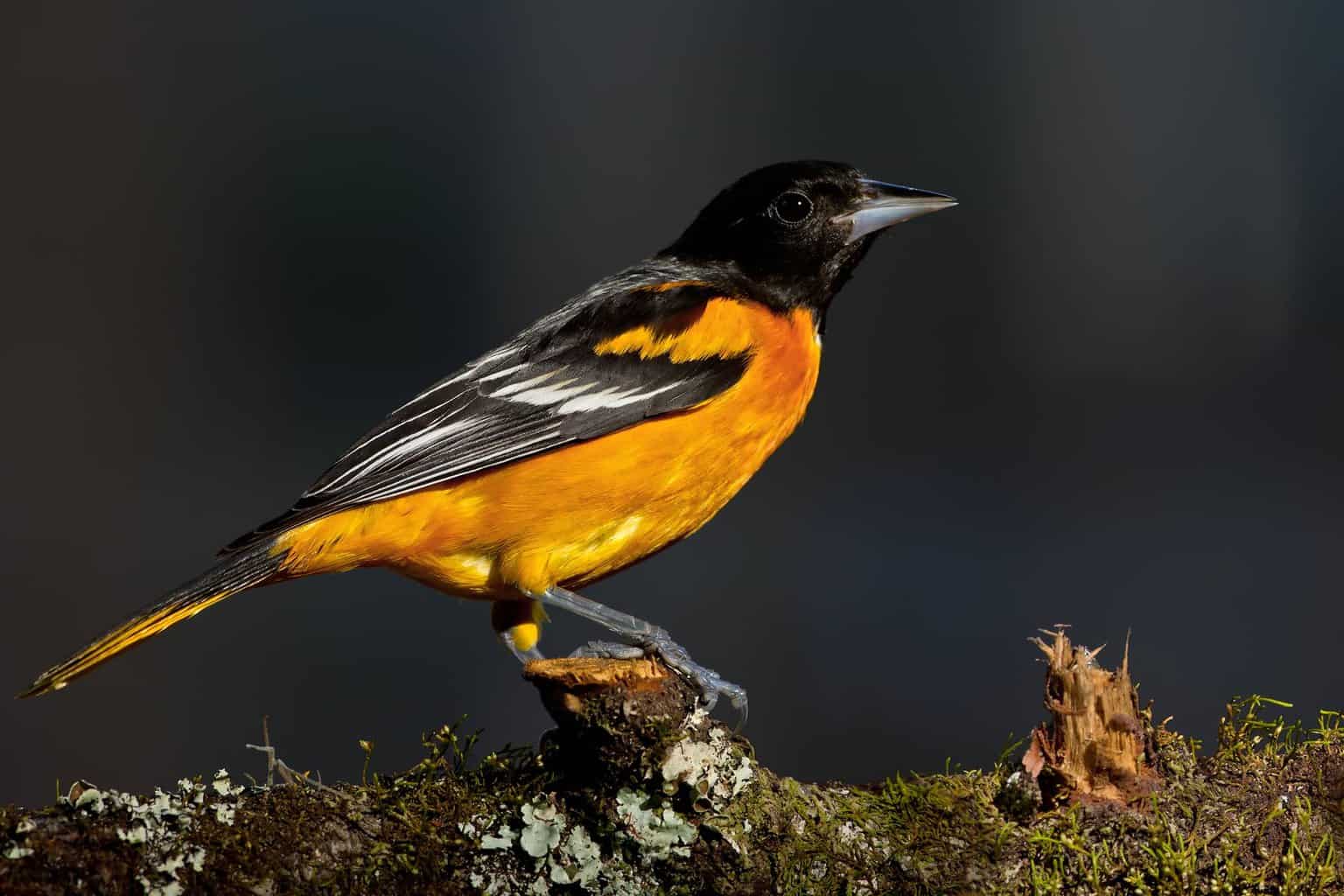
- Scientific Name: Icterus galbula
- Length: 6.7–8.7 inches (17-22 centimeters)
- Weight: 0.8–1.5 ounces (23-43 grams)
- Wingspan: 9.1–12.6 inches (23-32 centimeters)
The Baltimore oriole is a uniquely stunning bird found in Delaware and much of the eastern United States. This songbird, known for its striking orange and black plumage with white wing bars, is notorious for its distinctive vocalizations and acrobatic aerial displays. They spend most of their time nesting in deciduous trees.
The Baltimore oriole is also famous for its migratory habits. Large flocks often make their way south during the fall months before returning to northern states like Delaware in the spring.
A member of the New World oriole family, it is the official bird of Maryland, the United States Postal Service, and the Baltimore Orioles baseball team. The Oriole gets its name from 18th-century English Lord Baltimore’s coat of arms, which bears the same colors, and its similarity to the Old World Eurasian golden oriole.
You can attract Baltimore orioles to your yard with cut oranges on a platform feeder.
Orchard Oriole

- Scientific Name: Icterus spurius
- Length: 5.9–7.1 inches (15-18 centimeters)
- Weight: 0.6–1 ounces (17-28 grams)
- Wingspan: 9.8 inches (25 centimeters)
In Delaware, the Orchard oriole can be found throughout the state in both rural and urban areas during the breeding season from late April through early July. However, this vibrant blackbird is more likely to be found in the northern part of the state than in the southern region.
During the non-breeding season, this shy bird migrates to Mexico, Central America, and the Caribbean, where they spend most of their time nesting in the tops of trees. Their nest looks like a cup made from long grasses and suspended from the branches of trees.
The adult male Orchard oriole has black plumage with orange streaks on its breast and back and white wing bars on its black wings. The female is greenish-yellow with white wing bars.
These birds are insectivores, and their diet consists mainly of caterpillars, beetles, and other insects. But you might attract Orchard orioles to your yard with a nectar feeder filled with sugar water.
Common Grackle
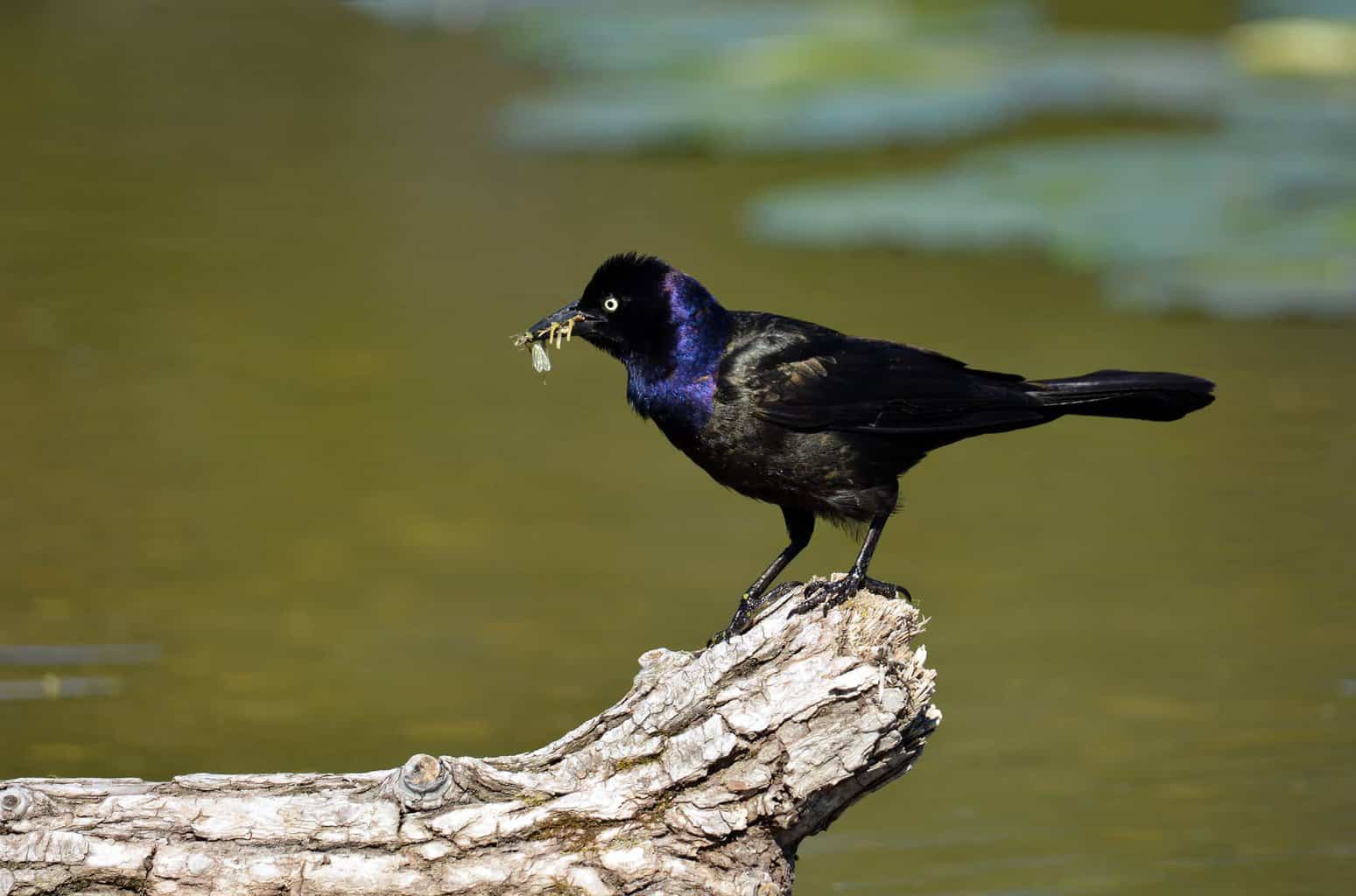
- Scientific Name: Quiscalus quiscula
- Length:11-13 inches (28-33 centimeters)
- Weight: 2.6–5 ounces (74-142 grams)
- Wingspan: 14–18 inches (36-46 cetimeters)
The Common grackle is a large, loud blackbird found throughout North America. In addition to their striking black-and-copper coloration, these birds are well known for their wide variety of vocalizations and sophisticated social behavior.
In particular, the Common grackle often forms huge flocks with other loud birds near water sources, such as streams or lakes. Interestingly, these birds can be found in Delaware along bodies of water that border agricultural land.
The Common grackle is a resourceful blackbird that serves an essential ecological function in Delaware by preying upon insects and small rodents that damage crops and threaten human health. They are, however, very difficult to keep away from backyard feeding stations because they will eat just about anything and are willing to fight for it.
Rusty Blackbird

- Scientific Name: Euphagus carolinus
- Length: 8.5–9.8 inches (22-25 centimeters)
- Weight: 2–2.1 ounces (57-60 grams)
- Wingspan: 14 inches (36 centimeters)
The Rusty blackbird is a large songbird. Both males and females have glossy black feathers and rusty-brown wings. Non-breeding males have a duller appearance in winter, with rusty edges to their feathers.
These birds breed in wetlands and boreal forests across North America, including Delaware. They migrate to the southeastern United States, Latin America, and the Caribbean in the winter.
Some Rusty Blackbirds stay year-round in the northern part of their range, including Delaware.
The Rusty Blackbird is an endangered species due to habitat loss and environmental changes. Wildlife officials are working to protect these birds and their habitats.
Bobolink

- Scientific Name: Dolichonyx oryzivorus
- Length: 5.9–8.3 inches (15-21 centimeters)
- Weight: 1–2 ounces (28-56 centimeters)
- Wingspan: 10.6 inches (27 centimeters)
In Delaware, Bobolinks can be found in agricultural fields and on golf courses from April through September. Their nesting season begins in early May, and they typically raise two broods per season.
Bobolinks are polygynous, meaning that each male mates with multiple females. Each female builds her own nest out of grasses, twigs, and other vegetation, lining it with animal hair or feathers. Their breeding population numbers in the millions across the country.
The Bobolink is a vital bird for farmers because it eats insects that damage crops. In the winter, they migrate to South America. Some Bobolinks will even fly all the way to Argentina.
Eastern Meadowlark

- Scientific Name: Sturnella magna
- Length: 7.5–10 inches (19-25 centimeters)
- Weight: 2.7–5.3 ounces (77-150 grams)
- Wingspan: 14–16 inches (36-41 centimeters)
The Eastern meadowlark, also known as the Common meadowlark, is a medium-sized blackbird found in the eastern United States and southern Canada.
This distinctive species is considered a true icon of the American countryside, with its bright yellow breast and black ‘V’-shaped wings marking it as one of the most recognizable birds in North America. Additionally, the Eastern meadowlark has several unique calls that make it easy to identify.
Although the Eastern meadowlark can now be found mainly in rural landscapes in Delaware, its population was once much more populous across all areas of North America. However, due to changes in agricultural practices over the past few decades, much of their natural habitat has been lost, and they have become increasingly endangered.
You can find them gathered in large flocks looking for seeds in fields in winter.
Final Thoughts
True blackbirds are more than just birds that are black. Blackbirds include those that are part of the Icteridae family. They are distinguished from European blackbirds, which belong to the thrush family.
This group includes familiar species like grackles, cowbirds, bobolinks, and orioles. All members of the blackbird family share similar features; they have long heads and large beaks that help them eat seeds and insects alike. Male and female blackbirds can vary greatly in size and color, as well.
Perhaps the most iconic Delawarean blackbird is the Eastern meadowlark, an easily recognized songbird with bright yellow feathers and a soft orange bill.
If you’re looking to see some of these amazing birds up close, consider exploring Delaware’s many natural areas and open spaces. Whether you hike through local forests or stroll along the coastline, there’s always a chance to spot one of these gorgeous animals right here in the First State.

